Tire makers are under pressure to almost literally reinvent the wheel as regulators turn their scrutiny to tire pollution, which is set to surge with the rise of electric vehicles (EVs) and threatens to undermine their green credentials.
When tires make contact with the road, tiny particles are abraded and emitted. The extra weight of EVs linked to their batteries means this little-discussed form of pollution — from an estimated 2 billion tires produced globally every year — is becoming a bigger problem.
Major producers, including Goodyear Tire & Rubber Co, Bridgestone Corp, Michelin Group and Continental AG, are also trying to fend off competition from cheaper Chinese rivals.
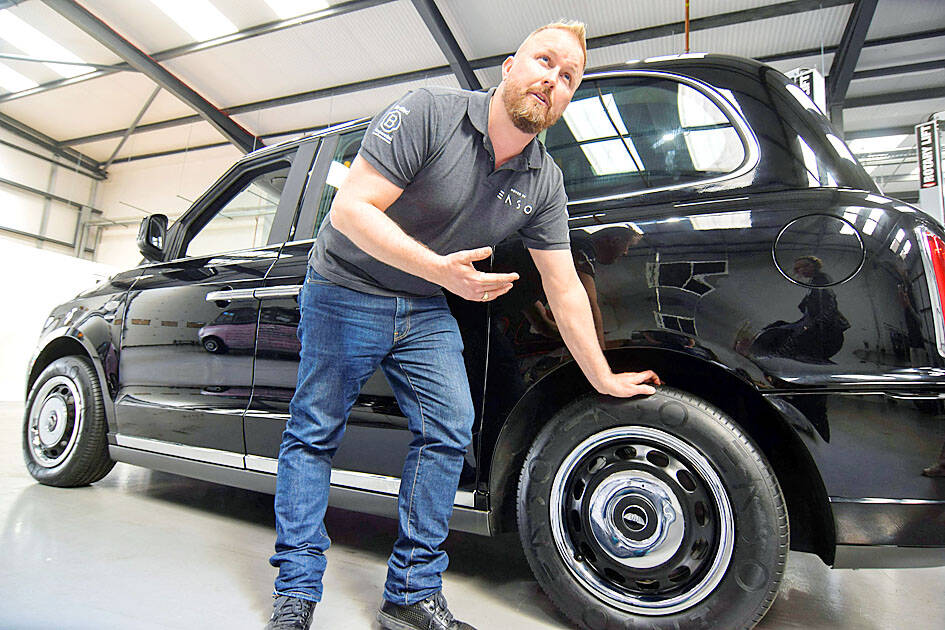
Photo: Reuters
“It’s not quite a perfect storm, but it’s close,” said Gunnlaugur Erlendsson, CEO of UK-based start-up Enso, which has developed more durable tires specifically for EVs and rents out tires that it takes back to recycle at their end of life.
Tire makers are racing to get ahead of emissions rules and find alternatives.
Emerging research is showing the toxicity of tires, which on average contain about 200 components and chemicals, often derived from crude oil.
While critics say tires contain many toxic and carcinogenic chemicals, so far there is only really consensus around one: 6PPD, an antioxidant and antiozonant found in all tires that reduces cracking.
This year, California is expected to be the first authority to demand that tire makers demonstrate they are seeking an alternative to 6PPD — a degraded form of which is lethal to some fish and has been found in human urine in South China.
The EU’s upcoming Euro 7 emission regulations are to set standards for tires for the first time.
Compounding those challenges, manufacturers would need to develop tires that emit less for heavy EVs, which Michelin and Goodyear have reported can wear out tires up to 50 percent faster.
“The unintended consequence of electric cars is we’ll have more tire pollution unless we have better tires,” said Erlendsson, whose tires in testing emit 35 percent less than premium EV tires from major manufacturers.
This is because their reliance on higher-quality, more expensive materials makes them more durable, he said.
Bridgestone and Goodyear declined to discuss the industry’s emissions challenges.
However, Michelin, Continental and Pirelli & C SpA said they are pursuing alternatives to 6PPD.
Michelin and Continental added that collective industry action might be necessary to find solutions.
Asked about Euro 7 regulations, Michelin said that it wants worldwide standards to squeeze the higher emitting tires, which are usually cheaper, out of the market.
Continental advocates a global abrasion standard with transparent labeling for consumers.
Nick Molden, CEO of British-based testing specialist Emissions Analytics, said that the “dirty end” of the list of tires the company has tested are “cheap Chinese imports” common in the European market.
The Chinese makers of Rockblade, Mazzini and Ovation — among the worst-performing tire brands on Molden’s list — did not respond to requests for comment.
New tires developed so far are unlikely to solve the problem, Emissions Analytics data showed.
For example, while tests carried out on Continental bicycle tires made using dandelions show a 24.5 percent drop in carcinogenic aromatics — which help cars hug the road — the chemicals in the particles they emit are similarly toxic overall, Molden said.
“They are just differently bad,” he added.
Continental said its dandelion tires were developed to find a sustainable form of natural rubber, and addressing 6PPD was a separate focus.
“It’s our responsibility to take care of this and to find a solution” to 6PPD, said Thomas Kramer, Continental’s head of material wear.
Developed during the Korean War, research shows that when 6PPD reacts with oxygen or ozone it forms 6PPD-quinone, which has been blamed for mass deaths of Coho salmon off the US west coast.
Californian regulators say that 6PPD’s effects on human health are unclear, but they are finalizing documents that could require tire manufacturers to analyze safer alternatives.
The tire industry said finding a replacement for 6PPD is hard, because any new chemical must prevent tires from degrading and cracking without affecting other attributes.
“Tires are a compromise” between safety, noise, handling and abrasion, European Tyre & Rubber Manufacturing Association secretary-general Adam McCarthy said.
Erlendsson said the industry could have a solution on the market within five years if pushed, but at a price.
Shifting the focus from tailpipe emissions, EU and UN regulators are working on Euro 7 regulations to curb emissions from brakes and tires.
EU lawmakers say they could be agreed on as soon as next year.
Particles from tires are expected to be the largest source of microplastics potentially harmful to aquatic life by 2050, data prepared for the European Commission showed.
Michelin technical and scientific communication director Cyrille Roget said his company estimates that globally tires emit about 3 million tonnes of particles annually, and create another 3 million tonnes of particles from road surfaces.
Michelin’s tests show that if a person drove 200,000km a year on its tires, they would emit about 1.5kg of particles, compared with a market average of 3.6kg, Roget said.
The worst-performing rival tires Michelin has tested so far emit about 8kg per year.
If Euro 7 were used to stop sales of the highest-emitting tires, “you would already remove a lot of particles from the market,” Roget said. “That’s the first step and it’s something we believe can be done more quickly.”
Michelin and Continental said they are already focused on making their tires more durable.
Michelin cut its tire emissions 5 percent between 2015 and 2020, Roget said.
However, the shift to EVs means tire makers would be forced to develop more durable tires — a tough challenge without natural rubber, which would be difficult to develop sustainably enough to support the whole industry, Molden said.
As part of its efforts to be as sustainable as possible, Enso has a recycling deal with Norwegian company Wastefront.
“The advent of the EV is the time to make this change, to improve tires,” Erlendsson said. “We’re never going to end up having zero tire pollution, but we can reduce it.”
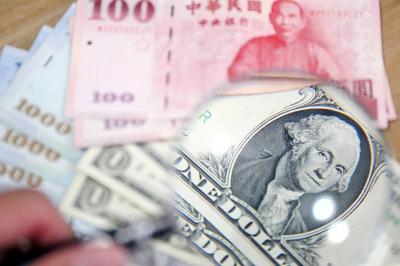
The US dollar was trading at NT$29.7 at 10am today on the Taipei Foreign Exchange, as the New Taiwan dollar gained NT$1.364 from the previous close last week. The NT dollar continued to rise today, after surging 3.07 percent on Friday. After opening at NT$30.91, the NT dollar gained more than NT$1 in just 15 minutes, briefly passing the NT$30 mark. Before the US Department of the Treasury's semi-annual currency report came out, expectations that the NT dollar would keep rising were already building. The NT dollar on Friday closed at NT$31.064, up by NT$0.953 — a 3.07 percent single-day gain. Today,
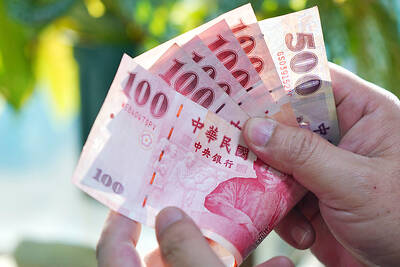
‘SHORT TERM’: The local currency would likely remain strong in the near term, driven by anticipated US trade pressure, capital inflows and expectations of a US Fed rate cut The US dollar is expected to fall below NT$30 in the near term, as traders anticipate increased pressure from Washington for Taiwan to allow the New Taiwan dollar to appreciate, Cathay United Bank (國泰世華銀行) chief economist Lin Chi-chao (林啟超) said. Following a sharp drop in the greenback against the NT dollar on Friday, Lin told the Central News Agency that the local currency is likely to remain strong in the short term, driven in part by market psychology surrounding anticipated US policy pressure. On Friday, the US dollar fell NT$0.953, or 3.07 percent, closing at NT$31.064 — its lowest level since Jan.
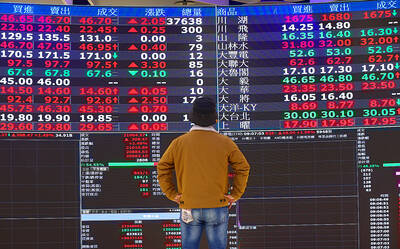
The New Taiwan dollar and Taiwanese stocks surged on signs that trade tensions between the world’s top two economies might start easing and as US tech earnings boosted the outlook of the nation’s semiconductor exports. The NT dollar strengthened as much as 3.8 percent versus the US dollar to 30.815, the biggest intraday gain since January 2011, closing at NT$31.064. The benchmark TAIEX jumped 2.73 percent to outperform the region’s equity gauges. Outlook for global trade improved after China said it is assessing possible trade talks with the US, providing a boost for the nation’s currency and shares. As the NT dollar
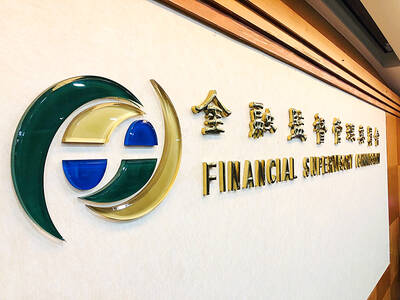
The Financial Supervisory Commission (FSC) yesterday met with some of the nation’s largest insurance companies as a skyrocketing New Taiwan dollar piles pressure on their hundreds of billions of dollars in US bond investments. The commission has asked some life insurance firms, among the biggest Asian holders of US debt, to discuss how the rapidly strengthening NT dollar has impacted their operations, people familiar with the matter said. The meeting took place as the NT dollar jumped as much as 5 percent yesterday, its biggest intraday gain in more than three decades. The local currency surged as exporters rushed to